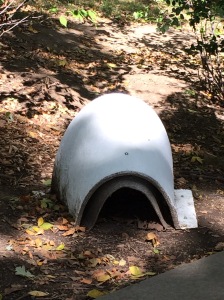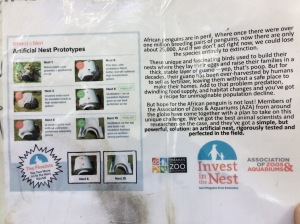As with the How Might We question, I was surprised at the impact of this technique. Initially, it felt like more of a crafts class than a helpful tool, but after putting prototyping into practice, I have become a believer in its power. Even a “mobile market” that was little more than paper fruits and vegetables taped to paper plates elicited design-changing feedback from the guests we recruited to role play a purchase.

In a real and more serious scenario, animal scientists from around the world have been using the design process to create an artificial nest to prevent African penguin extinction. An international effort and prototyping have reduced the field to two designs that hold promise as a substitute habitat. While the designs may look similar, their nuances are distinct enough to matter to the penguins – something the scientists would not have known if not for prototypes and testing.
The next time you have an idea, set aside your hesitations and create a concrete version that allows you to learn about a key component of your plan. Even a rudimentary and seemingly amateur model can unlock lessons that will make your idea much stronger in the end.


No comments:
Post a Comment